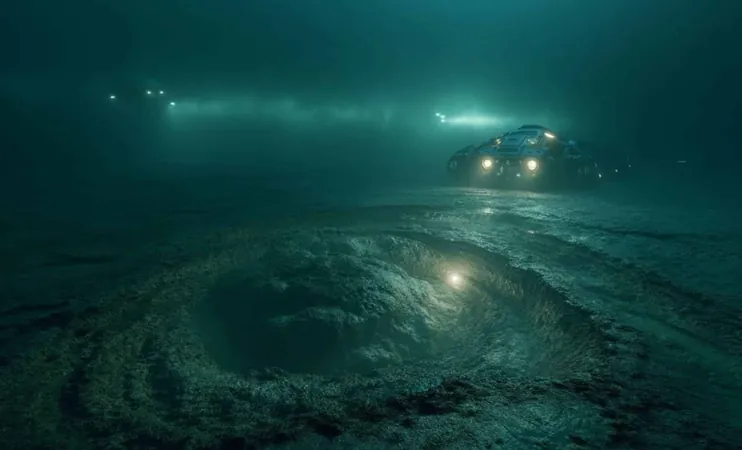
A Robotic Expedition at Lake Baikal Unveils Baffling Geologic Wonders and Life in the Depths
2025-04-10
Author: Ling
In the chilling depths of Lake Baikal, the oldest and deepest freshwater lake on our planet, a groundbreaking robotic exploration has unearthed astonishing geological phenomena that leave scientists astonished. Renowned for plunging 1,642 meters and hosting a rich tapestry of biodiversity, Lake Baikal has always captivated the scientific community.
Extraordinary Discovery of Mud Volcanoes
In the summer of 2023, an autonomous underwater vehicle (AUV) embarked on a mission into the icy waters of Lake Baikal, honing in on the northwestern basin. The robot captured breathtaking footage of mud volcanoes erupting at depths ranging from 100 to 165 meters in two significant areas: Malaya Kosa Bay and Goryachinskaya Bay.
While scientists were aware of mud volcanoes in the lake, the unexpected activity at such depths, especially near the Severobaikalsk fault, was a revelation. This discovery carries immense significance as it indicates a potential connection between tectonic stress and volcanic activity. Structural geologist Oksana Lunina, who spearheaded the expedition, stated, “The fault is alive.”
A Surprising Link to Earthquake Predictions
The correlation between these mud volcano eruptions and the nearby fault zone has researchers buzzing. Traditionally, mud volcanoes aren’t new to Lake Baikal, but this unprecedented activity and its specific location could become instrumental in predicting future seismic events in the area. Significant deformation zones and brittle fractures were identified along the lake bed. In Goryachinskaya Bay, the AUV observed steep slopes adorned with porous clay formations and small mud cones, some as tiny as five centimeters high.
Some of these structures appeared freshly disrupted, indicating ongoing eruptions. Additionally, gas-saturated fluids were spotted leaking from beneath the sedimentary layers, further substantiating the tantalizing link between mud volcanism and tectonic activity.
In Solontsovaya Bay, researchers observed gas plumes aligning with an old fault line. This pattern hints that these mud volcanoes might serve as early warning signals for seismic events, potentially giving scientists a powerful new method to predict earthquakes.
Life Resilient in Harsh Extremes
The robotic expedition didn’t just unveil geological marvels; it also revealed the resilience of life. In the extreme cold of Lake Baikal, around the mud volcanoes, a plethora of extremophiles was documented, including amphipods, gastropods, planarians, and cottoid fish.
These organisms thrive in the central vents of the mud volcanoes, where pressure is intense and temperatures are frigid. Scientists even found colonies of white sponges clinging to the rocky surfaces.
The adaptability of life in these extreme environments offers fascinating insights. The microbes and organisms inhabiting the area have seemingly evolved unique traits to endure the severe conditions found at depths of up to 165 meters.
The findings from Lake Baikal not only enhance our understanding of life’s survival in Earth's harshest environments but may also provide clues about the possibility of life existing on other celestial bodies.


 Brasil (PT)
Brasil (PT)
 Canada (EN)
Canada (EN)
 Chile (ES)
Chile (ES)
 Česko (CS)
Česko (CS)
 대한민국 (KO)
대한민국 (KO)
 España (ES)
España (ES)
 France (FR)
France (FR)
 Hong Kong (EN)
Hong Kong (EN)
 Italia (IT)
Italia (IT)
 日本 (JA)
日本 (JA)
 Magyarország (HU)
Magyarország (HU)
 Norge (NO)
Norge (NO)
 Polska (PL)
Polska (PL)
 Schweiz (DE)
Schweiz (DE)
 Singapore (EN)
Singapore (EN)
 Sverige (SV)
Sverige (SV)
 Suomi (FI)
Suomi (FI)
 Türkiye (TR)
Türkiye (TR)
 الإمارات العربية المتحدة (AR)
الإمارات العربية المتحدة (AR)